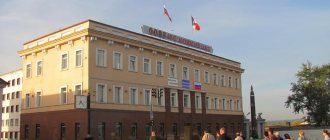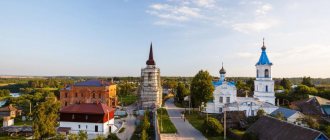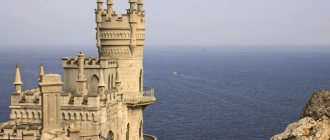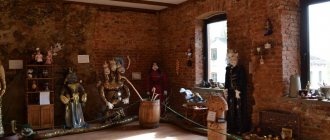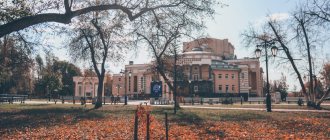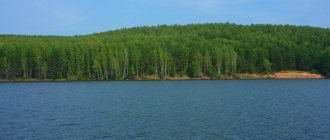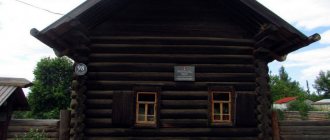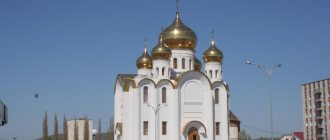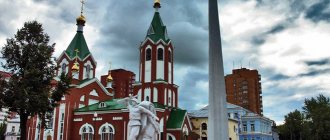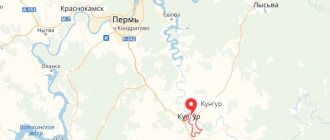When choosing a place for an interesting and unforgettable vacation, most tourists often choose large settlements where historical monuments are located, and there is also the opportunity to visit cultural institutions. However, some prefer small cities. Votkinsk is considered one of these. Its attractions are known mainly due to the monument to Tchaikovsky, but there are also other interesting places.
Tchaikovsky Estate Museum
It is an object attractive for visiting by admirers of the great composer’s music from all over the world. Every year in the museum you can attend a music festival dedicated to the composer. In this house, located on the shore of the Votkinsk pond, Pyotr Ilyich Tchaikovsky was born and spent his childhood there. The charm of the surrounding landscapes caused the impressionable boy to express his feelings in music.
The atmosphere of those times has been preserved in the house where the Tchaikovsky family lived. Visitors view the exhibits, the main one of which is the piano , which the little Pyotr Tchaikovsky himself played. During the excursions, the composer's music is performed. The view from the window is a picturesque pond. It is believed that it was he who inspired the future composer to compose music for the ballet “Swan Lake”. A walk through the adjacent garden with centuries-old linden trees will help you feel the atmosphere of that time.
Address: Tchaikovsky street-119.
What to see in Votkinsk
Votkinsk is the oldest city in its region - it was founded back in 1759. The legacy of the three centuries through which it passed was a rich history, unique old Russian architecture and interesting customs that cannot be found in other parts of our country. Once in Votkinsk, the first thing you should do is pay attention to its main attractions, which are of great importance for the history and culture of the city, and are also its pride.
Museum-Estate of P.I. Tchaikovsky
- Address: st. Tchaikovsky, 119.
The greatest composer Pyotr Ilyich Tchaikovsky was born in the village of Votkinsk in 1840. His native estate was empty when the family left Votkinsk. For a long time the house remained abandoned, and in the 1930s. and was completely in disrepair.
In 1940, in honor of the centenary of the birth of the outstanding musician, it was decided to restore the family estate and organize a memorial museum in it. After restoration, the stone manor acquired its original appearance: the architects managed to revive the smallest details. This is exactly what this house was like on the night when Pyotr Tchaikovsky was born.
The museum is dedicated to the life of the Tchaikovsky family and the creative development of the composer. The halls recreate the homely atmosphere in which Peter spent his childhood. The rooms are furnished with original 19th century furniture. On the tables, fireplaces and shelves you can see antique things that belonged to the musician - books, watches, candlesticks, dishes, stationery. Children's toys that little Petya Tchaikovsky played with are placed on the floor.
The Tchaikovsky estate is a special asset of Votkinsk. It is one of the city's most visited museums and appeared on the reverse of a three-ruble coin issued to celebrate the 450th anniversary of Udmurtia's entry into Russia.
Museum of History and Culture of Votkinsk
- Address: st. Kirova, 5.
The Votkinsk Museum of Local Lore was opened in February 1968. The initiative to create it belonged to local historians V.N. Stupishin and F.V. Streltsov. The exposition of the attraction is located in a two-story building.
The first floor is occupied by an exhibition called “Factory City”. She talks about how people of different classes lived in Votkinsk at different times: merchants, nobles, peasants and workers. Illustrations for this story are household items of the 19th-20th centuries: furniture, musical instruments, samples of costumes, paintings, devices for processing fabric, cultivating land, and so on.
The exhibition “Lada” is located on the second floor. It is an art gallery that presents the works of landscape painters who captured the natural beauty of Udmurtia on canvas.
In addition to exhibition activities, the museum takes an active part in the cultural life of the city, organizing creative competitions, musical evenings, folk festivals, meetings with writers and artists.
Blagoveshchensky cathedral
- Address: st. Kirova, 1.
The Annunciation Cathedral was erected in the first half of the 18th century on the site of an ancient church burned by the Pugachevites.
The white stone temple was rebuilt several times, but always retained its majestic appearance. It is decorated with snow-white semi-columns with figured capitals, porticoes, and frequent lancet windows. The round drum is topped with a massive golden dome. The building is adjacent to a tiered bell tower with a high gilded spire. The cathedral became famous due to the fact that it was here that Pyotr Tchaikovsky was baptized.
The dark period for the shrine began in December 1918, when the Bolsheviks executed priest Nikolai Chernyshev and his daughter Varenka. After this, the temple was closed. In the 1930s, a campaign was organized to destroy the architectural appearance of the church. Wall frescoes with biblical scenes were damaged, jewelry and church utensils were robbed and recycled, icons were used to light stoves, domes and bells were discarded and melted down.
Until the 21st century, the House of Culture named after Lenin operated in the temple building. In the winter of 2001, restoration work began, returning the cathedral to its former appearance. In August of the same year, the first liturgy was served and the temple again began to receive parishioners.
Today the Annunciation Cathedral is a historical and architectural monument, and is also considered a symbol of Votkinsk.
Monument to Tchaikovsky
Next to the estate museum there is a monument to Tchaikovsky. The majestic monument is made in the form of a composer sitting on a bench. The bench is located on a pedestal on which the inscription “P.I. Tchaikovsky."
The graceful pose and pensive face of the composer suggest that he is captured at the moment when great music is born in his soul, which will give many happy moments to its connoisseurs.
Address: Tchaikovsky street-119.
Votkinsk: city attractions
Votkinsk is a small city in Udmurtia, 52 kilometers northeast of the capital of the republic, Izhevsk, located in the Urals. The city got its name from the Votka River: it stretches along the bank of this river. More precisely, a reservoir formed after the construction of the Votkinsk hydroelectric power station. Among the cities in the region, Votkinsk is one of the oldest. This is a fairly large industrial, scientific and logistics center, which will also be of interest to those who love history.
| Votkinsk founding date: | 1759, city since 1935 |
| City population: | 98 063 people (2018) |
| City area: | 112.18 km² |
In the old historical part of Votkinsk you can see many old private houses that have survived to this day almost in their original form. Some of them look rather neglected, but this does not change the essence of the matter. The windows of many ancient houses have masterfully carved frames; Almost every home has its own style and history.
This city is known to the general public, first of all, as the birthplace of the great Russian composer, a classic of world musical culture - Pyotr Ilyich Tchaikovsky. Here this man was born and spent his childhood, developing as a personality, and probably found inspiration for some of his future works in the local landscapes. The father of the brilliant composer worked as a manager at a local state-owned factory.
The Tchaikovsky Estate Museum is the most important attraction of Votkinsk, which is visited by about one hundred thousand visitors a year. These are not only residents of our country, but also tourists from near and far abroad. In connection with the memory of Tchaikovsky, the city of Votkinsk regularly hosts festivals - primarily of classical music, of course.
In Votkinsk it is good to take a walk, looking at ancient houses and architectural monuments, visiting museums, strolling along the embankment and coniferous forests, which are sometimes not inferior in beauty to virgin taiga places. Almost all the main attractions of Votkinsk are located in its central region. These include churches, museums, ancient estates, and a fairly long embankment with beaches. You can also take part in excursion tours to the most significant places, but it won’t be difficult to see all the most significant places on your own. The best option is to walk around this city in sunny summer weather. That’s when it appears in all its glory, and all architectural monuments look most attractive in such weather.
Blagoveshchensky cathedral
The main square of the city is decorated with the Annunciation Cathedral, where Pyotr Tchaikovsky was baptized at birth. The pointed tower crowning it is visible from afar. The cathedral is a cultural monument of Russian classicism.
The history of the cathedral is a history of destruction and restoration. Despite the fact that it is now being restored, the Annunciation Cathedral in this state still represents a unique monument.
Address: Kirova street-1.
Votkinsk monuments and sculptures
A special decoration of the city are sculptural compositions dedicated to significant historical events and outstanding personalities.
Monument to P.I. Tchaikovsky
A monument to the famous composer was erected in front of the entrance to the Estate Museum, where he spent his childhood. Cast in bronze, Pyotr Tchaikovsky sits on a bench. His face is thoughtful and concentrated, as if he is listening to his soul, in which the first notes of another masterpiece of musical art are born. The sculpture is placed on a granite pedestal. The backdrop is a leafy alley and the green shore of a pond.
Monument to Vysotsky
In September 2016, one of the Votkinsk squares was named after Vladimir Vysotsky and became the site of a monument to the great Soviet poet. The author of the sculpture, Alexander Suvorov, made a lot of efforts to give the image of Vysotsky cast in metal maximum resemblance to the original. He depicted him in a dashing pose with a guitar on his chest.
The guests of honor at the opening ceremony of the monument and public garden were Nikita Vysotsky (son of a musician) and Alexander Solovyov (head of Udmurtia). At the end of the ceremony, they planted a blue spruce in the park.
Memorial of Military Glory
The monument to the participants of the Great Patriotic War is a 17-meter-tall obelisk in the shape of a dagger. The stone statue is decorated with bas-reliefs of the Order of St. George the Victorious and the Order of Victory.
The memorial is the custodian of a time capsule. The first message was laid down by young Votkinsk residents in the 1970s. It was opened in the fall of 2018 and read out at a ceremonial meeting. On a piece of paper that lay underground for almost half a century, the Komsomol members’ oath was written to maintain friendship, peace and strengthen the power of the Motherland. Along with the letter, the capsule contained metal containers with soil from the hero cities: Stalingrad, Smolensk and Brest.
Church of St. George the Victorious
Despite the fact that the church was built today, it is one of the attractions of Votkinsk. A competitive selection of architectural designs took place, as a result of which the Cathedral of Christ the Savior was chosen in the form of a smaller copy. The dome of the temple is crowned with a cross weighing 160 kilograms . The highest place in the city was allocated for construction.
Address: Lunacharskogo street-35.
Votkinsk Dam
The one kilometer long area adjacent to the Votkinsk Pond is called the Votkinsk Dam. It was built as a structure necessary for an ironworks. Now these buildings have lost their significance and are not functioning, but the dam continues to be a landmark of the city.
The remaining structures are historical exhibits. The picturesque view offered from the dam attracts city residents and its guests.
Address: Mira Street.
Cafe "Elegant"
Now let's walk along Mira Street along the embankment of the pond, admire the beautiful view and take a couple of pictures for memory. After one kilometer, Ordzhonikidze Street will be on the right - we will turn onto it to find a place for a delicious lunch. On Ordzhonikidze Street, 2 there is a cozy cafe “Elegant”.
Here you can dine on mixed meat soup and pink salmon fillet in vegetables with steamed rice, puree soup with herbs and a home-made cutlet. And if you decide to go for a walk in the morning, you can have breakfast with cheesecakes, pancakes, oatmeal or onion pie, which is very popular among visitors.
For dinner, you will also find a lot of delicious things on the cafe menu, for example, salmon steak with pomegranate sauce and grilled vegetables. There is also a large selection of salads and desserts for every taste.
Monument "Anchor"
In order to appreciate the significance of this monument, one must understand what contribution the Votkinsk plant made to the development of industry throughout the country.
The plant mastered a new method for producing tool steel, thanks to which high-quality metal-cutting tools were produced. When the specialization changed to metallurgical, the production of steamships and steam locomotives began. During the war, the production of anti-tank guns was mastered, and in the post-war years - ballistic missiles.
In the 19th century, it produced more than half of all anchors manufactured at numerous Ural factories. The quality of the anchors was so high that it made it possible to equip the largest of the battleships with them.
The anchor weighing 167 pounds was made in 1837. On the monumental monument there was a carved inscription that the heir to the throne (future Alexander II) took part in the forging. On the other side of the anchor there is an inscription that the production was carried out at the time when Lieutenant Colonel Tchaikovsky was the mining commander.
The original version of the monument was melted down, but was restored for the celebration of the bicentenary of the Votkinsk plant in 1959. As a result of a competitive selection, the Anchor monument was recognized as one of the symbols of Russia.
Address: Azin and Tchaikovsky Street.
Weekend trip - Votkinsk, Udmurt Republic.
Hi all! A little late, but I’m finally ready to talk about our little September trip to Udmurtia. So, first things first!
Because, according to my dearest wife, “ I have a problem in one place
“Then I keep wanting to go somewhere.
It seems that we just recently returned from another summer trip to the seas - Perm-Black Sea - 2019
, but again I could not sit exactly in one place and planned another mini-trip...))
This time the choice fell to go to the neighboring Udmurt Republic to the glorious city of Votkinsk. Friends praised the local Votkinsk baths, so we decided to go check it out, especially since we have something to compare it with - this year we went to thermal springs in Tyumen during the May holidays - Tyumen and hot springs
.
The distance between Perm and Tchaikovsky’s homeland is about 230 km, but this is if you take the most common route. But I wouldn’t be myself if I didn’t come up with something unusual. That’s why we used to get to Votkinsk today using “garden gardens.”
Our route there and back: Perm - Yugo-Kama - Okhansk (via ferry) - Frequent - Terebilovka village - Votkinsk - Chernovskoye - Bolshaya Sosnova - Ocher - Perm.
I remember we used the Yugo-Kamsky-Okhansk ferry before when we went to an interesting historical place in the Perm Territory - Kopan
. I note that after 4 years from the date of that trip, the ferry schedule has not changed - they still run once an hour, so you need to guess the time in advance so as not to miss the departure.
What I like about the road through Okhansk is the large number of beautiful views and the many church parishes of varying degrees of preservation. So today, I didn’t deny myself the pleasure of taking a few photos from there.
Immediately after Ostrozhka, if you drive towards Chastykh and further towards Votkinsk, the asphalt suddenly ends and a dirt road begins, which stretches for a good hundred kilometers. I would like to note that this area is currently undergoing active renovation and asphalt should appear here soon. In the meantime, we must be patient, reduce the speed and drive around the repaired areas along the side of the road. Soon there will be a highway here!))
We arrive in Votkinsk right before the opening of the Baths - at 10.00. What can I say - they built a good complex! Even if there are not real thermal springs here (compared to Tyumen), but just an artificial complex, but overall, it’s very worthy. And the prices are quite affordable - 200 rubles per hour per person, and there are also various promotions. We just happened upon one of these - for a child under 14 years old you pay only 180 rubles. for 3 hours of stay in the complex. For those interested, here is their website - Votkinskietermy.rf.
A three-hour stay in the thermal baths is enough, so at 13.00 we were already thinking about where else to go and what to see. We decided to go to the center, to the pond and the estate of Pyotr Ilyich Tchaikovsky.
We were very successful this time. It turns out that on September 14, Votkinsk celebrates Oseniny - a local harvest and autumn festival, held in the estate of the famous composer. Of course, we did not miss the opportunity and took part in this event with pleasure!
Source
Monument to the 8K-14 ballistic missile
The monument in the form of a rocket is located near the entrance of the Votkinsk plant. Evidence of the production of missiles of this kind at the plant. The length of the rocket is more than 15 meters . It is installed on a pedestal, where the technical data is indicated on the attached plate. The missile is a closed object, so you are not allowed to get close to it.
Address: Kirvoa street-2.
Palace of Culture "Yubileiny"
After a delicious lunch we move on. We need to return to the embankment and move along it. In just a couple of minutes we will find ourselves in front of the entrance to the Yubileiny Palace of Culture.
This is the main creative space of Votkinsk, where city, republican and even international events take place. Every spring, Yubileiny becomes the main musical venue in Udmurtia - a festival dedicated to Pyotr Tchaikovsky is held here.
The Palace of Culture opened in 1967 - it became a gift for the townspeople from the Votkinsk Machine-Building Plant. The building was designed by architect Vasily Orlov. In 2015, the outdated building was reconstructed and equipped with new lighting, sound and video equipment.
The building is surrounded on three sides by colonnades, and a wide multi-stage staircase leads to the entrance. The auditorium seats up to 670 people. On the second floor there is a beautiful balcony overlooking the pond, a foyer with a gallery. On the other side of the Palace of Culture there is an entrance to the exhibition and sports halls and the library, as well as study rooms for clubs - more than 1,000 adults and children come here to study.
Source
Museum of History and Culture of Votkinsk
The museum building consists of two floors.
- On the ground floor there is an exhibition “City-factory”, dedicated to the life of city residents. The exhibition tells about the history of the city, its traditions, and highlights the life of workers, merchants, and intelligentsia.
- On the second floor there is another exhibition called “Lad”. It introduces you to the unique nature of the region, which is reflected in the paintings of local artists.
- In addition to permanent exhibitions, the exhibition hall also hosts traveling exhibitions.
- The museum also hosts musical evenings, folk festivals, and meetings with famous people.
Address: Kirova street-5.
History of origin
The first settlements on the territory of modern Votkinsk appeared before our era, but then they had a different name, so they are not related to the city. Its founder is considered to be Count Pyotr Ivanovich Shuvalov , who initiated the construction of the village in April 1759.
The old name of the settlement is Votkinsk plant. A railway was built not far from it, so many workers needed a place of residence located close to work. For a long time, the village was simply part of the federal district, but was considered a city.
In June 1774, the village was attacked. Pugachev and his army advanced to the plant in Izhevsk and captured the village. His soldiers partially destroyed the factory and other important structures, after which they left the village. Almost nothing is known about the history of Votkinsk in the next century.
In August 1918, the population of the village expelled Soviet power, supporting the Bolshevik uprising, which spread to neighboring counties and provinces. The Bolsheviks were in this territory for quite a long time. In March of the following year, the villages were occupied by Kolchak, led by the Siberian Army.
The official date of formation of the city is 1935. At that time, Votkinsk belonged to the Kirov region. After 2 years it was transferred to the Udmurt Republic (ASSR).
Nikolaevsky building of the Votkinsk plant
The housing is located inside the plant. It is a very high tower, so you can see it from outside the factory area. The Nikolaevsky building is one of the ancient projects, reminiscent of the development of the city and its importance in industry.
Address: Kirova street-2.
General information
If you look at a map of Russia, you can see that Votkinsk is located in the Urals, namely in the East of the European part of the country . Izhevsk is located 52 km from it, and the city itself stretches along the Votkinsk pond. This reservoir is artificial; the Votka River is located nearby. A hydroelectric power station was built approximately 40 km from the village.
Votkinsk is considered one of the oldest cities in the Urals, as well as in the Udmurt Republic, and has its own coat of arms and flag. Its total area reaches 112 square kilometers. People of different nationalities live on the territory: Tatars, Uzbeks, Udmurts. The majority of the population is Russian.
In Udmurtia, the time zone is different, so the difference with Moscow is 4 hours. The city has two official languages - Russian and Udmurt. The climate is moderate continental, but the winter is longer than in the central part of Russia. Summer is usually short, the maximum temperature does not exceed +37 degrees. In the last few years, experts have noted that the rate has been increasing.
The population has increased significantly over the years of the city's existence. More than 100 years ago it did not exceed 20 thousand people, today it is almost 100 thousand. Every few years a census is conducted and the number changes up or down.
Every year tourists ask where to go in Votkinsk. Local residents often recommend visiting the Stepan Razin cafe, located on the street of the same name. The establishment is named after the great chieftain, most reviews about it are positive. But the city also has other cafes, bars and restaurants that deserve the attention of tourists.
In addition, you can enter the region, code, telephone number and reserve a place in one of the establishments using the Internet, social networks (for example, VKontakte).
Church of the Transfiguration
In addition to its historical and spiritual value, the temple is an interesting work of architecture. Its originality lies in the fact that it is the only cathedral built in the Russian-Byzantine style. The building is beautiful not only outside, but also inside, where there is a huge iconostasis and painted vaults.
Address: Pioneer Street-1.
Religious buildings of Votkinsk
Orthodox churches in Votkinsk belong to different centuries and architectural styles. Each of them has its own history, firmly intertwined with the history of the city.
Church of the Transfiguration
The red-brick temple was built in the 19th century on the site where its predecessor wooden church stood, burned by the Pugachevites. The new temple complex was built in the Russian-Byzantine style.
A two-tier bell tower with a hipped roof, pyramidal turrets, a massive silver dome and stained glass glazing gives it a special charm. The interior decoration has been preserved from the century before last: the impressive iconostasis and paintings on the vaults are remembered by several generations of parishioners.
The Transfiguration Church was one of the few religious institutions that continued liturgical activities during the Soviet years. Thanks to this, the church avoided vandalism and remained intact.
Church of St. George the Victorious
The young temple stands on the highest point of the city of Votkinsk - its golden dome is visible from afar. The church was built in the early 2000s, but in appearance it resembles the cathedrals of Tsarist Rus'. The white stone building in the Russian-Byzantine style is made without frills, but with grace, which is given to it by massive arches and faceted columns. The parish area is very well-groomed and equipped for families with children.
Panteleimon Church
The Panteleimon Temple was built at the end of the 19th century. This is a brick building in pseudo-Russian style. The architectural composition is complemented by side porches and a two-tier hipped bell tower. The whitewashed facades are decorated with ornaments of figured masonry and acanthus.
The church received parishioners until March 1929. After its closure, its premises were used at various times as a cinema, a mechanical workshop, a small goods base and a woodworking plant. Many temple extensions were demolished, and in their place garages, warehouses and workshops appeared.
The city council made the decision to return the building to the Izhevsk diocese in 1991. Over the next five years, large-scale restoration work took place in the temple, during which the bell tower was reconstructed, industrial buildings were demolished, and the internal layout of the liturgical halls was restored.
Panteleimon Church resumed its activities in 1996. Since then, parishioners have visited her every day.
Nagornoye Cemetery
Pre-revolutionary burials of the first settlers of Votkinsk have been preserved. On it you can see the graves of famous people of the city, as well as soldiers who died during the war, because dozens of hospitals were located there. The cemetery is located in the city center, so there are always a lot of visitors there.
Address: Verkhnyaya street - 1.
